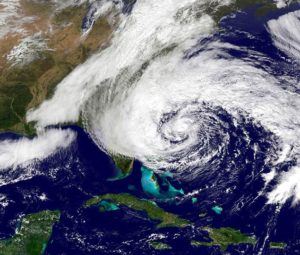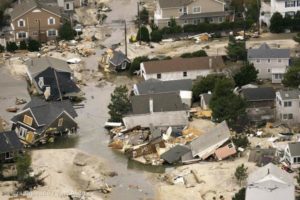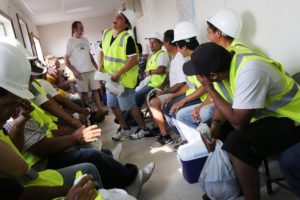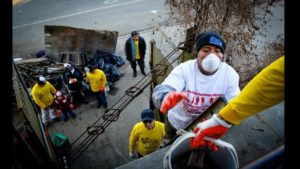
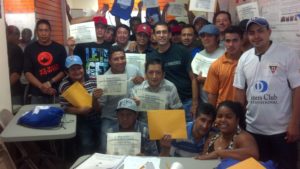
Health and Safety Training for Immigrant Workers: Through collaboration with Make the Road New York, the National Day Laborer Organizing Network (NDLON), and the Barry Commoner Center for Health and the Environment, Queens College, City University of New York, we have developed and implemented a first-of-its kind health and safety training program in Spanish. In particular we have built extensive health and safety training capacity by becoming one of the few collaborations in the country that develops OSHA-authorized trainers who can provide 10 and 30-hour OSHA construction and general industry classes in Spanish. We are also developing similar train-the-trainer programs with Native American tribes on a reservation that is also home to the Hanford nuclear site in Washington State. Support for these programs comes primarily from the National Institute of Environmental Health Sciences (NIEHS) for our national work as part of the Tony Mazzocchi Center for Health, Safety and Environmental Education (TMC) and from and the New York State Department of Labor Hazard Abatement Board for our work within New York State. In addition to The Labor Institute, TMC includes the United Steelworkers, Communications Workers of America, NDLON and Make the Road New York.
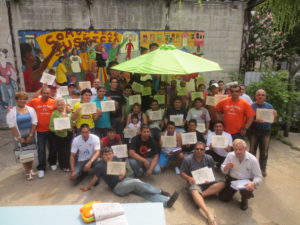

Health and Safety Training for Unions: Through our partnership with the National Institute of Environmental Health Sciences (NIEHS), The Labor Institute supports health and safety training for union workers engaged in hazardous production represented by the United Steelworkers (USW) and the Communications Workers of America (CWA). In particular we develop programs, write proposals and help ensure continuous assessment and quality control of the curriculum and the training. (For more information see the Tony Mazzocchi Center http://www.uswtmc.org/)




Training for Disaster Clean-up Workers: In cooperation with the Worker Training Program of the NIEHS and the United Steelworkers, we train trainers in the wake of natural disasters. These trainers in turn provide health and safety training in various languages to workers who become engaged in highly hazardous clean-up efforts after hurricanes, floods and fires and other events. Flowing from the most recent climate science, we view many activities within this body of work as directly linked to global climate change.
